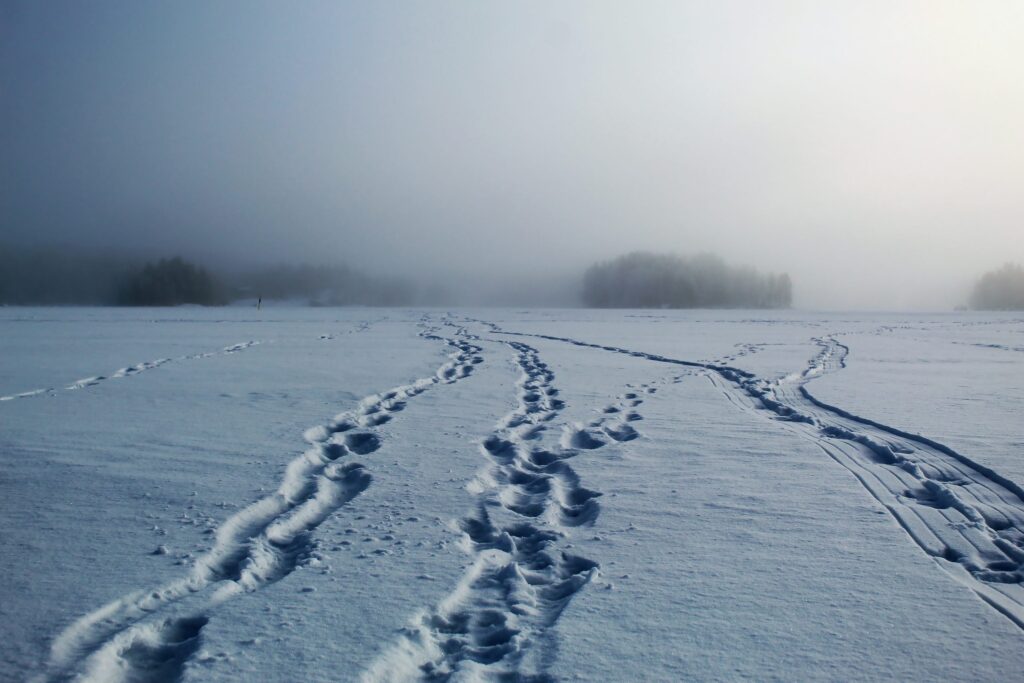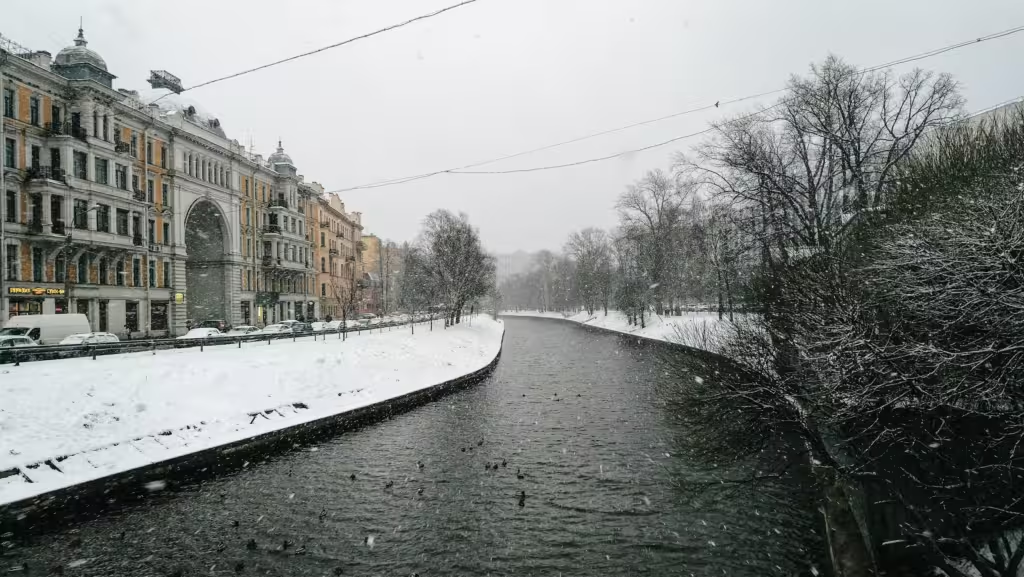One of the really weird things about the whole debate around global warming, or the monologue as alarmists would have it, is that we keep being told some big bad abstract thing called “climate change” is causing stuff like more tornadoes, more dry spells, more heat waves, more snowstorms or whatever. Everywhere you look you see claims like “Climate change is expected to crank up temperatures in winter more than any other season in Canada”. Or “Greece faces an uphill battle to cope with the growing impacts of climate change”. But “climate change” isn’t a cause of changes in climate. Nor is it an effect. It’s the thing itself. If winter temperatures rise, it’s not because of climate change, it’s an example of it. If there are more floods or tornadoes, or indeed fewer, it doesn’t cause climate to change, it is climate change. And the idea that weather getting worse can cause weather to get worse is silly. It’s a confusion of categories. A very widespread one.
This kind of rhetoric is everywhere. For instance in The Atlantic “As climate change brings disasters and increasingly unlivable conditions to growing swaths of the United States, it also has the potential to remake America’s economic landscape”. But again, climate change doesn’t bring disasters. More disasters, if it were happening, would be an example of climate change. And when one reads on MSN, from Espresso, that “Fighting climate change and its damaging effects – destructive floods, raging storms, runaway wildfires and so on – is one of humankind’s greatest challenges” it’s easy to cheer, or jeer, and move along. But stay a moment and ponder what this statement actually means, or could mean.
If these are the “effects” of climate change, what is climate change itself? Is it a man or a horse? Or a big scary monster on a movie screen? Because when, say, Godzilla trashes Tokyo, the effects are smashed buildings, raging fires, floodwaters and so forth. And the cause is a guy in a bad allosaurus suit with big pointy claws and “atomic breath”. But there isn’t some big scary thing in a climate change suit that causes hurricanes, wildfires and sea level and thermometer rise. Or is there?
Many people seem to think so. And this mechanistic metaphor, while especially odd in people you’d think would regard nature as holistic, also explains the notion of “climate breakdown”, which is not just a piece of rhetorical escalation but also of intellectual seize-up.
In the Guardian, a good place for it, Bill McKibben rants about “the increasingly extreme weather that will be driven by climate breakdown.” Driven by it, please note. Not described by it. But increasingly extreme weather isn’t caused by climate breakdown, it is climate breakdown. Or might be if it happened, unless it turns out that weather has typically been extreme and we had a lucky break and it calmed down for a bit.
Otherwise climate breakdown would have to be this cosmic thing where the weather didn’t get worse until something we call “climate” broke, and then things around it got ugly. It’s nonsense on stilts. And a good thing too, since McKibben predicts dreadful flooding.
A characteristic version of this error, from something inappropriately called Climate Reality Canada, the local branch of an outfit “Founded and chaired by Nobel Laureate and former US Vice President Al Gore”, and which calls itself “a non-Indigenous organization working on climate education in what is now known as Canada”, is:
“Rural and remote communities are integral to Canada’s economic, cultural, and social fabric. However, these communities face heightened susceptibility to the adverse effects of climate change, including droughts, floods, crop failures, and wildfires.”
Granted we don’t expect much from an organization whose financial statements for 2022 list $28,184 in “donations with receipts,” $35,418 in “donations without receipts,” $201,832 in “government funding” and $46,733 in “other revenue” which they claim somehow totals $731,167, but you see the problem. These things, if they were getting worse, would not be “adverse effects of climate change”. They would be adverse changes in the climate.
Ditto a claim like: ““There is some evidence that visiting an ecosystem threatened by climate change could lead people to become more aware of their impact on the environment.” Again, an ecosystem isn’t threatened by some big bad thing out there called “climate change” that will, like Godzilla, suddenly burst into view and toast it with atomic breath. An ecosystem disintegrating, or transforming, or flourishing, in a long-term sustained way, is “climate change”.
This tendency to mistake abstractions for the concrete realities they are intended to make manageable can be seen in a number of fields. Including economics, or more particularly macroeconomics, where for instance the “cost push” theory says that rising prices cause inflation when actually “inflation” is just a term for a general price rise. Inflation can’t cause prices to rise, or vice versa. It is the generalized phenomenon of prices rising.
By the same token, “climate change” can’t cause more drought or more rain or both. It can’t cause it to get warmer in one place, colder in another, windier in a third and less windy in a fourth. All these things, if they should occur, would be examples of climate change not results of it… or causes.
They might of course be examples of climate variability instead. Sometimes conditions fluctuate, often dramatically, but there is no underlying long-term trend. But if things really do change, for instance North Africa going from moist and verdant during the Holocene Climatic Optimum to dry and brown today, it isn’t because of climate change. It is climate change.
One reason people fall into this careless habit, verbal and mental, is their tendency to think of the climate as some sort of machine constructed to run smoothly in just one way. And if it somehow breaks down, the bindle rotor torques out due to feeding in too much CO2 or something, then it overheats, bits fly off and so on. So climate change is like your engine seizing up. But the climate is not a manufactured machine with one good dependable state and disaster if you put in too much fuel or too little, run it too fast or too slow, get the mix of oxygen and gasoline wrong. It’s an incredibly complex and dynamic system with very poorly understood feedback mechanisms, and it is composed of the various things we call weather including big phenomena like atmospheric rivers, ocean currents and trade-winds.
The temptation to “reify” climate, to reduce it to a supposed vast single entity, is pervasive. Thus a New York Times piece by David Wallace-Wells bears the headline “What will we do when we see the climate more clearly?” Which is an interesting question, in that it invites us to ponder what seeing “the climate” would entail.
Possibly the famous Apollo 8 “Earthrise” shot that helped galvanize the modern environmental movement. In some sense seeing the entire planet from the outside all at once, indescribably beautiful but also apparently tiny and fragile, is seeing “the climate”. But from inside, it’s not one thing and it’s not small and it’s not fragile. Try to withstand hurricane-force winds and see who buckles first.
What Wallace-Wells has in mind is, well, confused. The target of his enthusiasm is that:
“This month MethaneSAT, an $88 million, 770-pound surveillance satellite conceived by the Environmental Defense Fund and designed at Harvard to precisely track the human sources of methane being released so promiscuously into the atmosphere, was launched by SpaceX, to great fanfare. Methane, a somewhat less notorious greenhouse gas than carbon dioxide, is produced by industrial and natural processes – leaking oil and gas infrastructure, decomposing melted permafrost, the belching of cows and the microbial activity of wetlands. We’ve known that methane is producing a lot of warming and that there is a lot more of it in the atmosphere now, but we didn’t have the full picture. Beginning next year, MethaneSAT will begin beaming down everything picked up by its spectrometer, providing a publicly available quick-turnaround methane-monitoring system that has filled the hearts of climate advocates and data nerds with anticipation. What will it see? The hope is that it will see a map of climate malfeasance that doubles as a global to-do list.”
Well, no. It will see the planet as we already do and, if it works as they hope, it will also show approximately where methane is produced and in roughly what amounts. But we won’t be seeing “the climate”. You just can’t see “the climate”. It’s not a thing. It’s an abstraction. If the satellite works as intended, what we’ll be seeing is traces of methane in the atmosphere in parts per billion. If the satellite tells us more about methane, good. But it won’t show us “the climate” and people who think it will are engaged in a massive, pervasive confusion of categories.



Brilliantly written article! Climate change isn't a thing, it is a rhetorical construct.....which of course, is a really polite way of describing BS!
Also, there is no such thing as 'the climate'. Climates vary a lot over the entire planet. Many change constantly, some are pretty stable (especially around the warm and wet tropics). This is another of those mental traps that people often fall for.
The satellite they're launching will "see" whatever they want it to see.I don't trust their future findings when they already have pre-conceived biases
about methane and climate change.Climate does not "breakdown" or "worsen" per se.It just is.And it changes normally,naturally,and variably.Sometimes over centuries,sometimes in mere decades.The data shows us that.Local radio station just mouthed an absurd story on Wednesday,
said that climate change by the end of the century "could" lead to extinction of some species,and introduction of "new" species,especially insects.
Say what?No names of scientists or institutions involved in said claim.Good Grief,Charlie Brown!
The biggest change in our climate is caused by the last stages of the last ice age that nobody is willing to talk about.
It seems like a long time now since a friend took me to see Al Gores convincing propaganda, An Inconvenient Truth, [ LIE ]. Then being adverse to the vainglorious drama of egoic children I found myself purposely seeking out so called climate crisis deniers just to be an annoyance to those about me who had fallen for all this nonsense. Luckily I found this forum and have for a little time contributed a small monthly amount to help keep the faith. I must admit though to a large degree of scepticism in relation to the enormous amount of proof denying that the Earth is burning will not be enough to stop these people getting their way and destroying humanity by making frightened little drones out of those of us who have not run for the hills to live wildly. Covid was just a precursor to the very real power available to the very few.
The explosion of the Nordstream pipelines on 25-26 September 2022 has sent the methane explosion into Nirvana once and for all, releasing 300-500 million m3 of methane into the atmosphere. According to IPCC calculations, this is equivalent to 7.5 million tonnes of CO2 emissions. The release of this gigantic amount into the atmosphere should have resulted in the formation of a giant thermal mushroom cloud over the sea in the region.
The reality: there were numerous ships and aircraft in the area of the accident site, and people report nothing of the thermal mushroom cloud they would have been caught up in. The meteorological services would have confirmed the temperature rise due to the increased methane concentration by satellite imagery. If methane really was a huge warming agent, all the greenhouse supporters would have turned their attention to the Baltic Sea and bombarded us with warming news every hour. The air over the Baltic would have been catapulted into a dangerous sea of heat and warmth in the mainstream media.
The reality of constant temperature measurements in the Baltic Sea region:
The temperature in the Baltic Sea is well monitored by meteorological stations on the islands, weather balloons, numerous ships and satellites. In the week following the explosion, from 26 September onwards, temperatures over the Baltic Sea continued to drop, bringing frosty September and early October days all the way to the Alps.